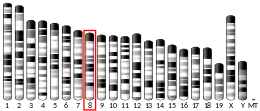| CMTM2 | |||||||||||||||||||||||||||||||||||||||||||||||||||
|---|---|---|---|---|---|---|---|---|---|---|---|---|---|---|---|---|---|---|---|---|---|---|---|---|---|---|---|---|---|---|---|---|---|---|---|---|---|---|---|---|---|---|---|---|---|---|---|---|---|---|---|
| Identifiers | |||||||||||||||||||||||||||||||||||||||||||||||||||
| Aliases | CMTM2, CKLFSF2, CKLF like MARVEL transmembrane domain containing 2 | ||||||||||||||||||||||||||||||||||||||||||||||||||
| External IDs | OMIM: 607885 MGI: 2447311 HomoloGene: 88915 GeneCards: CMTM2 | ||||||||||||||||||||||||||||||||||||||||||||||||||
| |||||||||||||||||||||||||||||||||||||||||||||||||||
| |||||||||||||||||||||||||||||||||||||||||||||||||||
| |||||||||||||||||||||||||||||||||||||||||||||||||||
| |||||||||||||||||||||||||||||||||||||||||||||||||||
| |||||||||||||||||||||||||||||||||||||||||||||||||||
| Wikidata | |||||||||||||||||||||||||||||||||||||||||||||||||||
| |||||||||||||||||||||||||||||||||||||||||||||||||||
CKLF-like MARVEL transmembrane domain-containing protein 2 (i.e. CMTM2), previously termed chemokine-like factor superfamily 2 ( i.e. CKLFSF2), is a member of the CKLF-like MARVEL transmembrane domain-containing family (CMTM) of proteins. In humans, it is encoded by the CMTM2 gene located in band 22 on the long (i.e. "q") arm of chromosome 16.[5][6] CMTM2 protein is expressed in the bone marrow and various circulating blood cells.[7] It is also highly expressed in testicular tissues:[8] The CMTM2 gene and CMTM2 protein, it is suggested, may play an important role in testicular development.[6]
Studies find that the levels of CMTM2 protein in hepatocellular carcinoma tissues of patients are lower higher than their levels in normal liver tissues.[7] CMTM2 protein levels were also lower in the hepatocellular carcinoma tissues that had a more aggressive pathology and therefore a possible poorer prognosis.[8] Finally, the forced overexpression of CMTM2 protein in cultured hepatocellular tumor cells inhibited their invasiveness and migration.[8] These findings suggest that CMTM2 protein suppresses the development and/or progression of hepatocellular carcinoma and therefore that the CMTM2 gene acts as a tumor suppressor in this cancer.[7][8] Patients with higher CMTM2 levels in their linitis plastica stomach cancer (i.e. a type of gastric cancer also termed diffuse-type gastric cancer or diffuse type adenocarcinoma of the stomach) tissues had better prognoses than patients with lower CMTM2 levels in their linitis plastica tissues.[9] And, the CMTM2 gene has been found to be more highly expressed in the salivary gland adenoid cystic carcinoma tissues of patients who did not develop tumor recurrences or perineural invasion of their carcinomas compared to the expression of this gene in patients whose adenoid cystic carcinoma tissues went on to develop these complications.[10] These findings suggest that the CMTM2 gene may act as a tumor suppressor not only in hepatocellular carcinoma but also in linitis plastica and salivary gland adenoid cystic carcinoma. Further studies are needed to confirm these findings and determine if CMTM2 protein can serve as a marker for the severity of these three cancers and/or as a therapeutic target for treating them.[7][9][10]
References
- 1 2 3 GRCh38: Ensembl release 89: ENSG00000140932 - Ensembl, May 2017
- 1 2 3 GRCm38: Ensembl release 89: ENSMUSG00000035785 - Ensembl, May 2017
- ↑ "Human PubMed Reference:". National Center for Biotechnology Information, U.S. National Library of Medicine.
- ↑ "Mouse PubMed Reference:". National Center for Biotechnology Information, U.S. National Library of Medicine.
- ↑ Duan HJ, Li XY, Liu C, Deng XL (April 2020). "Chemokine-like factor-like MARVEL transmembrane domain-containing family in autoimmune diseases". Chinese Medical Journal. 133 (8): 951–958. doi:10.1097/CM9.0000000000000747. PMC 7176445. PMID 32195671.
- 1 2 "Entrez Gene: CMTM2 CKLF-like MARVEL transmembrane domain containing 2".
- 1 2 3 4 Wu J, Li L, Wu S, Xu B (August 2020). "CMTM family proteins 1-8: roles in cancer biological processes and potential clinical value". Cancer Biology & Medicine. 17 (3): 528–542. doi:10.20892/j.issn.2095-3941.2020.0032. PMC 7476098. PMID 32944388.
- 1 2 3 4 Li M, Luo F, Tian X, Yin S, Zhou L, Zheng S (2020). "Chemokine-Like Factor-Like MARVEL Transmembrane Domain-Containing Family in Hepatocellular Carcinoma: Latest Advances". Frontiers in Oncology. 10: 595973. doi:10.3389/fonc.2020.595973. PMC 7691587. PMID 33282744.
- 1 2 Iyer P, Moslim M, Farma JM, Denlinger CS (2020). "Diffuse gastric cancer: histologic, molecular, and genetic basis of disease". Translational Gastroenterology and Hepatology. 5: 52. doi:10.21037/tgh.2020.01.02. PMC 7530323. PMID 33073047.
- 1 2 Mays AC, Feng X, Browne JD, Sullivan CA (August 2016). "Chemokine and Chemokine Receptor Profiles in Metastatic Salivary Adenoid Cystic Carcinoma". Anticancer Research. 36 (8): 4013–8. PMID 27466507.
Further reading
- Liu G, Xin ZC, Chen L, Tian L, Yuan YM, Song WD, et al. (March 2007). "Expression and localization of CKLFSF2 in human spermatogenesis". Asian Journal of Andrology. 9 (2): 189–198. doi:10.1111/j.1745-7262.2007.00249.x. PMID 17334588.
- Shi S, Rui M, Han W, Wang Y, Qiu X, Ding P, et al. (August 2005). "CKLFSF2 is highly expressed in testis and can be secreted into the seminiferous tubules". The International Journal of Biochemistry & Cell Biology. 37 (8): 1633–1640. doi:10.1016/j.biocel.2004.04.028. PMID 15896670.
- Xu M, Yang S, Gao Y, Shi S, Ma D (June 2005). "A functional promoter region of the CKLFSF2 gene is located in the last intron/exon region of the upstream CKLFSF1 gene". The International Journal of Biochemistry & Cell Biology. 37 (6): 1296–1307. doi:10.1016/j.biocel.2005.01.004. PMID 15778092.
- Han W, Ding P, Xu M, Wang L, Rui M, Shi S, et al. (June 2003). "Identification of eight genes encoding chemokine-like factor superfamily members 1-8 (CKLFSF1-8) by in silico cloning and experimental validation". Genomics. 81 (6): 609–617. doi:10.1016/S0888-7543(03)00095-8. PMID 12782130.
- Denef B, Werf FV, Geest HD, Kesteloot H (May 1976). "Calibrated apexcardiography and assessment of left ventricular dynamics in man". European Journal of Cardiology. 4 (Suppl): 143–152. PMID 1278213.
External links
- Human CMTM2 genome location and CMTM2 gene details page in the UCSC Genome Browser.



